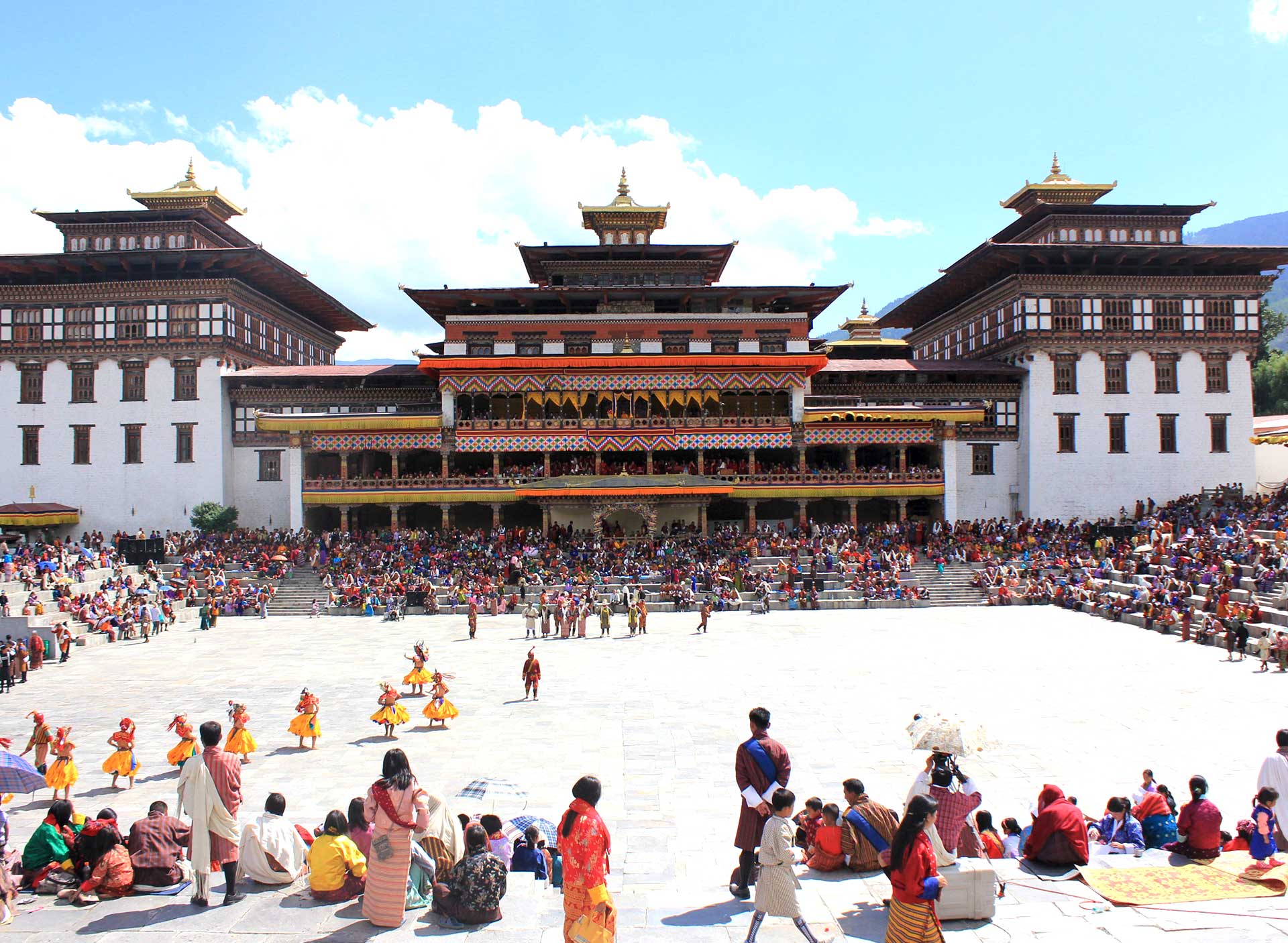
Tshechus are the most important festivals celebrated in Bhutan and are held to commemorate the Birth of Guru Rinpoche and celebrate his magnificent deeds. Guru Rinpoche or Guru Padmasambhava was a great saint and mystic from the Swat valley in modern day Pakistan who visited Bhutan and Tibet in the 8th century, tamed the hostile and negative forces and re-introduced Buddhism in these regions, broadly referred to as the second propagation of the faith. He is worshipped particularly in Bhutan and the Himalayan regions as the Second Buddha and regarded with the utmost reverence. He left behind a tremendous spiritual and cultural legacy in the form of many of the everyday religious rituals performed relating to purification, wealth endowment, longevity, healing and death rites as well as various cultural traditions, that thrives to this day.
Held at Tashichhodzong, the three-day religious event plays a very important role in the lives of all Bhutanese as it is an opportunity for them to cleanse themselves of their bad Karma and be reminded of how to lead their lives in accordance to the tenets of Buddhism. Staying true to the time honored tradition, locals dressed in their finest outfit and jewelries, religiously partake in the festival. Witnessed by thousands of local and tourists alike, the actual Tshechu is preceded by months of daily and nightly prayer and rituals to call upon the Gods to ensure that the festival runs smoothly without any hindrances. It is a religious social event which brings people unified by common culture, tradition, and beliefs, together every year. Monks perform a series of meticulously choreographed religious dances wearing grand silk robes and exquisitely crafted masks. The sacred mask dances are believed to invoke the blessings of the deities upon all who witness them.
